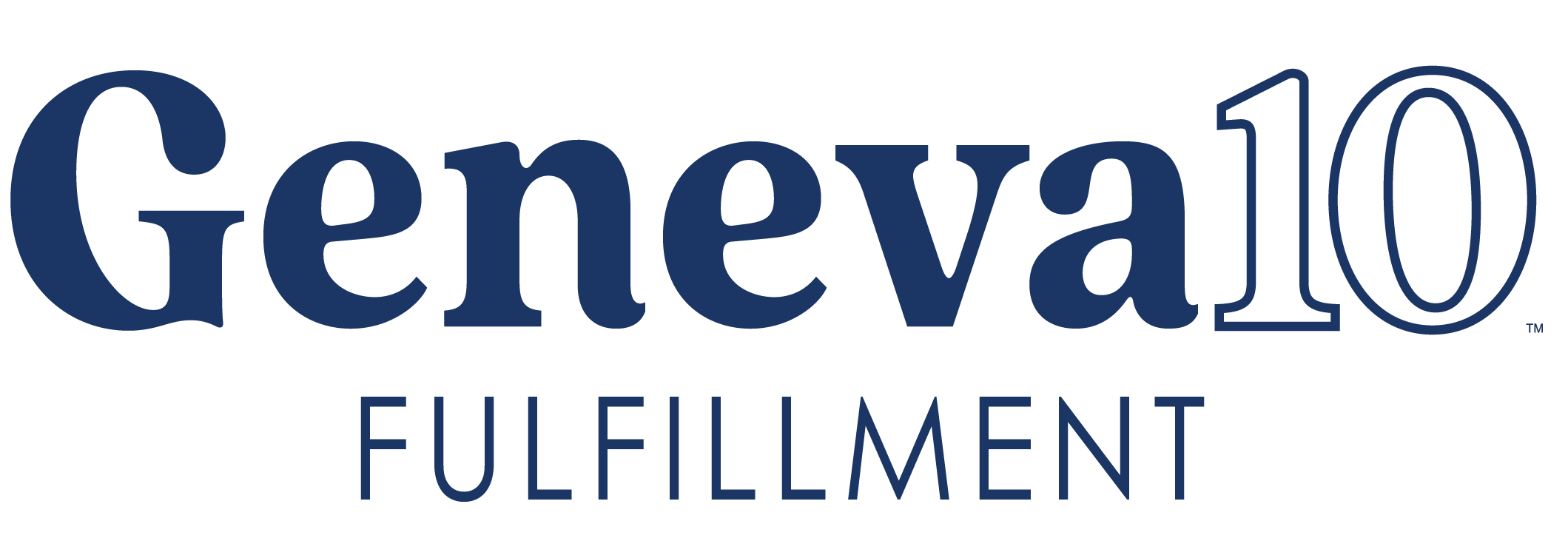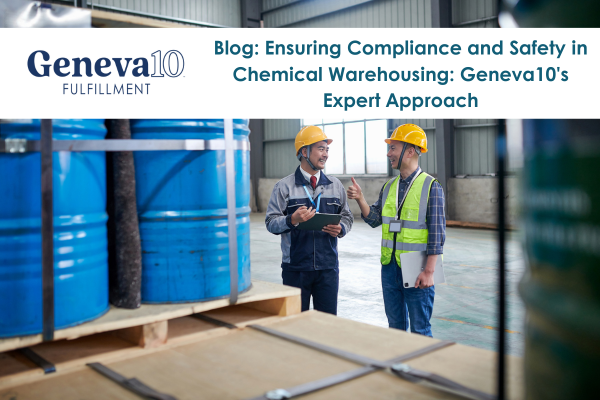When selecting a 3PL provider for chemical warehousing, making sure they meet all regulatory standards is crucial. All providers who wish to provide hazardous materials (hazmat) storage must obtain the proper certification to ensure chemical facility compliance.
Geneva10’s commitment to safety, compliance, and industry best practices ensures you can trust us with all your hazmat storage needs.
Certifications for Chemical Facility Compliance
The certification process for hazmat storage isn’t a single, standard procedure, but rather a multi-layered approach involving multiple government agencies and regulations. This involves submitting permit applications, meeting specific storage requirements, passing inspections, and maintaining training and documentation for all employees who handle hazardous materials.
Different government agencies are involved at the federal, state, and local levels. These include:
- Occupational Safety and Health Administration (OSHA): Establishes general workplace safety standards for handling and storing hazardous chemicals through the Hazard Communication Standard (HCS) and other regulations. These cover labeling, safety data sheets (SDSs), employee training, and basic storage requirements.
- Environmental Protection Agency (EPA): Regulates the storage, transportation, and disposal of hazardous waste under the Resource Conservation and Recovery Act (RCRA). Stored chemicals that meet specific criteria may be classified as hazardous waste, requiring additional permits and disposal procedures.
- Department of Transportation (DOT): Sets regulations for the transportation of hazardous materials by various modes (road, rail, air, water) through the Hazardous Materials Transportation Regulations (HMR). These may apply if you transport chemicals offsite, even for disposal.
- Local Fire Departments: Many municipalities require permits from the fire department for storing certain types and quantities of hazardous materials to ensure compliance with local fire codes and safety regulations. The fire department will inspect your storage facilities to make sure they meet safety standards such as proper ventilation, fire suppression systems, and spill containment.
OSHA Permissible Exposure Limits
OSHA Permissible Exposure Limits (PELs) are legally enforceable standards in the United States that set the maximum allowable amount of a hazardous substance a worker can be exposed to in an 8-hour workday, 40-hour workweek. These limits are established by the Occupational Safety and Health Administration (OSHA) to protect workers from the harmful effects of exposure to hazardous chemicals, dusts, fumes, mists, and gases.
OSHA develops PELs based on scientific evidence of the health effects of exposure to hazardous substances. They are designed to protect workers from both acute (immediate) and chronic (long-term) health effects.
PELs are typically expressed as:
- Time-Weighted Average (TWA): The most common type of PEL, representing the average concentration of a substance a worker can be exposed to over an 8-hour workday.
- Short-Term Exposure Limit (STEL): The maximum concentration of a substance a worker can be exposed to for a short period of time (usually 15 minutes) without adverse effects.
- Ceiling Limit: The concentration of a substance that a worker should never be exposed to, even for a short period of time.
It’s important to note that PELs are not absolute guarantees of safety. Individuals may be susceptible to hazards at lower exposure levels than indicated by PELs. Comprehensive 3PL safety standards include additional measures, such as engineering controls and personal protective equipment (PPE), to protect workers from hazardous substances.
CFATS Requirements
The Chemical Facility Anti-Terrorism Standards (CFATS) program is a U.S. government initiative that aims to reduce the risk of terrorist attacks involving chemicals. It applies to any facility that possesses or plans to possess certain chemicals of interest (COIs) at or above the specified screening threshold quantity (STQ) and concentration. These chemicals are chosen based on their potential for use in a terrorist attack due to their toxic, flammable, or explosive properties.
Facilities that meet the thresholds must adhere to the following CFATS requirements:
- Registration and Top-Screen: The facility must register with the Cybersecurity and Infrastructure Security Agency (CISA) and complete an online survey reporting their chemicals. This information helps CISA determine whether the facility is considered high-risk and requires additional security measures.
- Tiering: Based on the Top-Screen information, CISA assigns the facility a tier level (1-4) based on its risk.
- Site Security Plan or Alternative Security Program: Facilities assigned to tiers 2-4 must complete documents addressing security aspects such as perimeter security, access control, personnel security, cybersecurity, and incident response.
- Security Vulnerability Assessment (SVA): High-tiered facilities (3-4) must also complete an assessment that identifies potential security vulnerabilities within their facility.
- Reporting and Recordkeeping: Facilities must submit their SSP, ASP, or SVA to CISA for review and approval. They must also maintain documentation and records related to their security measures and report any changes to CISA.
- Inspections and Enforcement: CISA may conduct inspections of facilities to verify compliance with CFATS requirements.
CFATS is a complex regulation with specific requirements for different facilities. It’s important to consult with relevant government agencies to ensure you are compliant and have the necessary security measures in place.
Choosing a 3PL for Chemical Warehousing
Choosing the right 3PL partner for chemical warehousing is essential. Geneva10’s expertise in chemical facility compliance and safety is unmatched. We excel in both OSHA PELs and CFATS requirements, regularly updating our security plans and conducting regular assessments to ensure we meet all the requirements.

